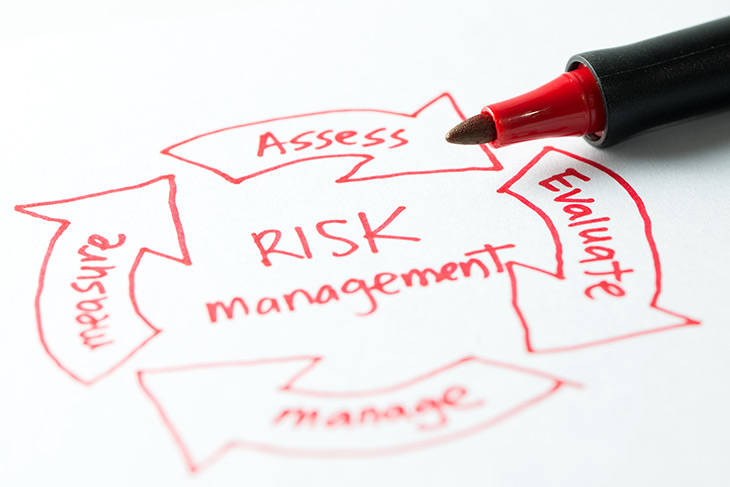There was a point in time when trading was the exclusive realm of employees of major trading houses, brokerages, and financial institutions. But the Internet changed all that. Today, online brokers have given interested individuals and average private investors the opportunity to trade stocks.
Day trading, in particular, is fast gaining popularity not just for the enormous profits its promises, but also for the thrills associated with it.
- Day Trading – A Brief Explanation
- Basics of Day Trading Stocks
- How to Find the Best Day Trading Stocks
- Why Trade Volume Is Important
- The Importance of Volatility
- Your Personality Plays a Major Role
- Focus on Stocks that Show Relative Strength and Weakness
- Never Pick Day Trading Stocks without Research
- Importance of Liquidity
- Reasons to Avoid Penny Stocks
- Money and Time Management
- Create Your Own List of Stocks
- Keep It Simpler – Just One or Two Stocks
- Utilize Trading Tools
- Create a Proper Trading Strategy and Stick to it
- Summary
- Conclusion – Is Day Trading Suitable For You?
Day Trading – A Brief Explanation
Day trading is a technique that involves multiple purchases and sales in a bid to exploit the trend and volatility of asset prices during the course of a day. It is a trading technique commonly used by financial institutions as they are capable of leveraging their transactions and utilizing sophisticated algorithms to boost profitability.
But today, online brokers have made intraday trading available for individuals living in any part of the world.
If you want to day trade stocks, you can do so with a limited set of resources and tools. Before plunging into day trading, you must understand that day trading is fraught with risks and requires a lot of patience, expertise, knowledge, and diligence.
Basics of Day Trading Stocks
You need to understand two basic concepts before attempting to day trade stocks: volume and volatility. Everybody has heard of volume and volatility, but very few have actually understood their significance in day trading.
Volume
Volume can be understood as the number of shares traded within a particular time frame. It is an important indicator that traders use before making a move. If you have signed up at a reputed online broker, you will automatically receive a list of day trading stocks with high volumes. You can choose from this list or do your own research to discover opportunities that your online broker hasn’t yet discovered.
Search for stocks that display a sudden increase in volume. For example, if you notice a stock that usually trades just a couple of million shares every day is already trading over six million shares before noon, you have to explore it without fail. Your online broker’s stock screener may not be effective enough. In this case, you can use Yahoo Finance Unusual Volume, The Street, Bar Chart, and other stock screening services.
Volatility
Volatility refers to the unpredictability of the changes in the values of assets or securities. If the price of an asset changes drastically over a short time frame, it becomes ideal for a day trader. If an asset has low volatility, it does not present any opportunity to make a fast profit.
You can use beta to learn more about the volatility of a particular stock. Beta is a unit used to measure the volatility of stocks in relation to their markets. If the beta of the market is 1.0, stocks are given a ranking according to their deviation from the market beta. Stocks that move over the market are assigned a beta greater than 1.0 and stocks that move below the market are assigned a beta lesser than 1.0.
The best stocks for intraday trading are those that either have a large volume or have recently experienced a sudden rise in volume and have a beta value higher than 1.0. If you trade stocks without volume and volatility, you won’t be able to make a profit.
At the same time, you also have to be aware of defensive stocks, which are low volatility stocks that suddenly witness a rise in volume because of panicky market situations that force a large number of traders to invest in them.
How to Find the Best Day Trading Stocks
If you are a beginner to day trading, you are going to be overwhelmed with the large number of trading opportunities available to you. Finding the best day trading stocks is not an easy task as it requires a lot of research on your part.
You can make profits out of day trading only if you do it right. If you are a badly prepared beginner with an inefficient trading strategy, you are going to find day trading not only difficult, but also disappointing. Even seasoned traders can sometimes experience sudden losses because of unpredictable market situations.
Mastering the art of finding the best stocks for day trading is much more important than spending hours learning about indicators, trends, gaps, and moving averages. If you know a lot about trading, but are confused about finding the best day trading stocks, this article is for you.
Continue to read the following tips and tricks on finding the best day trading stocks.
- Avoid Getting Emotionally Attached to Stocks: Day traders tend to get fond of stocks that make them a profit, which is something you must avoid. Emotions have absolutely no place in the tough world of day trading. Intraday traders use objective technical analyses to trade patterns, and that is what you must focus on.
Conversely, don’t avoid stocks that once gave you a bad experience. If your analysis shows that they can make a good trade, grab them.
- Start Early: Your chances of success will definitely increase when you start early. It gives you the opportunity to identity top performing stocks during the pre-market as well as market times.
Logging in to your online brokerage account at 9:15 a.m. is not at all a good idea as the market is currently moving at a breakneck speed, gathering volume from hedge funds as it goes. Ideally, you should start preparing for your day trading activities at 8:00 a.m. or even earlier.
- Read the News: The best place to find day trading stocks that exhibit high volatility and volume is in the financial news. A stock can display great volume and volatility on the days of product announcements, release of earnings report and economic data, FDA announcements, and upgrades and downgrades. If you read the financial news regularly, you shouldn’t find it difficult to quickly identify a list of best stocks for day trading.
- Follow Trends: You will benefit a lot if you follow the trends. When the market gets bullish, try to pick stocks that have the potential to rise; and when the market gets bearish, try to pick stocks that have the potential to fall.
- Research Stock Ownership: Take the time to learn something about the ownership of the stock you would like to trade. You will find these essential details on the exchange website or you can get the required information by studying its trading patterns.
If the stock does not have a wide ownership, it will exhibit more volatility as the few people who own it can easily control and manipulate it. Intraday traders should always pick stocks that are widely owned and liquid as it will considerably reduce their trading risks.
- Use the Trade Volume Index (TVI): The TVI measures exactly how much money is flowing in and out of various assets and helps day traders to determine whether or not they should pick a particular stock. The trade volume of a stock tells you exactly how many times traders purchase and sell it within a given time frame, usually one trading days.
High volume indicates both positive as well as negative interest in a stock. It also predicts a major price movement in the near future.
- Pick Financial Services Stocks: Stocks of major financial service corporations or financial institutions are excellent for day trading. For example, among the most high volume day tracking stocks is Bank of America (BoA). Its high trading volume gives it great liquidity. Stocks of JP Morgan & Chase, Wells Fargo, Morgan Stanley, and Citigroup also make excellent day trading stocks for the same reason. All of them display high volatility and high volume.
- Pick Social Media Stocks: The increased popularity of social networking companies such as Facebook, Twitter, and LinkedIn have made their stocks some of the most traded in the industry. Of course, the ability of the social networking industry to retain its users and generate sustainable revenue from them is highly debatable.
The prices of social media stocks are theoretically representative of their issuing corporations’ cash flows, but recently, valuations also consider the companies’ earning potential. Analysts say that social media stock has risen in value because of these reasons. Irrespective of the debate, social media stocks are the most picked among day traders.
- Diversify Your Portfolio: Avoid sticking to your backyard alone and explore opportunities to diversify your portfolio. Explore stocks listed on a wide range of popular exchanges such as Hong Kong’s Hang Seng, the London Stock Exchange, and others. If you move beyond your geographical limits, you can not only gain access to profitable foreign stocks, but also cut costs.
Why Trade Volume Is Important
Adequate trade volume is essential as it enables day traders to makes entries and exits on demand. As the volume of a stock increases, it becomes easier for a trader to enter and exit trade positions without slippage or as little slippage as possible. Slippage occurs when market orders fill at unexpected prices; it usually happens when the number of shares in trade is smaller than the order.
Day traders have different trade volume preferences, but most of them pick stocks that have a daily trading volume of at least one million shares. Some day traders choose stocks with daily trading volume of several million shares. One of the most traded stocks in the US, the S&P 500 SPDR, has a trading volume of 100 million shares per day, although the number may sometimes go higher.
You will find an overwhelmingly large number of high volume stocks for day trading out there, but you can use a tool called stock screener to narrow them down to a list that you can easily manage. If you find the list still unmanageable, try to narrow it down further by picking stocks that trade at least three million shares per day or more.
The Importance of Volatility
Day traders usually stick to stocks that exhibit strong price movements through the day. The nature of a stock’s volatility, however, varies. While some stocks move an average of 0.5% per day, others move anywhere in the range of 1% to 5% in the course of a day.
Your choice of stocks depends on your online broker, your trading style, your personality, and trading strategies. Many traders can handle stocks with a volatility range of 0.5% to 2% while some experts can easily handle a volatility of up to 5% per day.
Your reflexes need to be really fast while dealing with high volatility stocks, and your online broker should be capable of executing your trade in an instant. If your reflexes and those of your broker are limited, you won’t be able to profit from trading high volatility stocks and should avoid them.
Again, you can use your stock screener to identify stocks with volatility levels that you can easily handle. If your stock screener turns up too large a list, narrow it down by picking only stocks with a preferred percentage of volatility. Go for high volatility stocks only if you are an experienced trader who knows what he/she is doing.
Your Personality Plays a Major Role
You cannot just use day trading stocks picked by another trader just because he/she happens to be an expert. Instead, your choice of stocks should fit your personality, your life situations, and your trading goals. There is no single solution that works for all in day trading.
You have to carefully consider factors such as the amount you can afford to invest, your risk tolerance, and the type of investment you intend to make. You should also consider the number of hours you are willing to give for research.
If you want to become a successful day trader, you have to spend literally hours studying market situations and sectors that best fit your personal requirements, tastes and preferences. You have to invest a lot of time in reading the latest financial news and company news. You also have to be willing to start early.
You also have to keep your emotions in check. Don’t consider any stock to be lucky or unlucky for you because it all depends on technical analysis. You need to be informed. While being willing to learn from the gurus, you should avoid copying any guru blindly. Instead, you have to develop a trading strategy that fits your lifestyle and your goals.
Focus on Stocks that Show Relative Strength and Weakness
Relative strength and weakness are deep concepts, which if well understood, can help you choose your day trading stocks wisely.
Stocks that continue to remain strong even if their sector of the market falls are relatively strong while stocks that fall when their sector of the market falls are relatively weak. While relatively strong stocks continue to outperform, relatively weak stocks continue to underperform.
Of the several methods to calculate relative strength and weakness, the easiest is to consider the ration of the prices of two stocks. Rising lines are indicative of a stock’s strength in comparison with the other in the pair. This does not mean that you have to blindly purchase relatively strong stocks as relative strength could also indicate that the stock is falling at a slower rate than the others.
Another way to measure relative strength of a stock is by comparing its moving average with the moving average of another stock. Or you could just look at the chart, which will tell you everything you need to know about it.
Study the concepts of relative strength and weakness well as they can help you pick top performing stocks.
Never Pick Day Trading Stocks without Research
High quality research is absolutely essential if you want to become a success at day trading, but many day traders are eager to make profits and lack the patience required for thorough research.
To pick the best day trading stocks, you have to first select sectors that interest you the most. Next, you have to list top performing stocks within your chosen sector. You do not have to trade the top stocks in each sector. Instead, you have to identify the most liquid stocks. To do this effectively, you need technical analysis. You also need to study stock fundamentals and determine their levels of support and resistance.
As a day trader, you also need to invest a lot of time in monitoring stocks. Even the slightest fluctuation in price has to be taken note of as it can help you boost your profit. Such close monitoring is humanly impossible, but there are tools, services, and products that monitor your stocks for you.
You need to know exactly when to enter and exit your trade. You can buy stocks in the morning only to sell them for a profit in the evening. Or you can sell your stock in the morning and purchase it in the evening if you feel that its value will go down.
Importance of Liquidity
Liquidity refers to the speed with which you can purchase or sell securities or assets at prices that reflect their intrinsic values. To put it simply, it refers to the degree of the ease with which assets and securities can be converted into cash.
One of the most important factors to consider while picking stocks for intraday trading is liquidity. The trading volumes of liquid stocks are very high, enabling traders to purchase and sell huge quantities of shares without impacting their price. If the stocks are not liquid, traders cannot purchase and sell large qualities of shares as there are hardly any buyers. This results in reduced profits and increased risks.
Liquid stocks are ideal for day trading, especially as they are available at a discount than stocks that are not liquid. Equities from high market cap corporations tend to be more liquid than equities from low market cap corporations as the stock can be easily bought and sold.
Liquid stocks that display more volatility are excellent for day trading. The volatility of a stock increases if the company that issues it experiences variant cash flows. Usually, markets anticipate changes in prices, but in some cases, expert day traders can make profits on the mispricing of an asset. Market uncertainties are always welcome by an expert day trader as they can always take advantage of them.
If you are looking for highly volatile and highly liquid stocks for day trading, you can check out services such as Google Finance and Yahoo Finance. Your online broker can also provide a list of such stocks throughout the day.
Reasons to Avoid Penny Stocks
Although day traders are continuously looking for the best penny stocks for intraday trading, the best of them are aware that penny stocks are best avoided. Expert day traders know that volatility and trading volume are pivotal to the success of day trading. Penny stocks have low trading volume, which means that not many traders are buying and selling them, a fact that reduces their volatility.
Moreover, any volatility you may observe in a penny stock is misleading because the slightest change in price is reflected as a large number when expressed in percentages. The simple truth is that the price of penny stocks hardly moves, usually remaining in the same place throughout the day. You cannot make a profit out of stocks that never exhibit any price movements.
Money and Time Management
Day traders usually start their day before the markets open. They spent a lot of time getting the latest financial news, mostly developments of the previous night. Then they pick the stocks they would like to focus on throughout the day.
Day traders need to be alert throughout the day and respond quickly to major market developments. They need to know exactly when to enter and exit trade positions. The faster they move, the bigger their profits are going to be.
However, day traders also have to manage their money just as effectively. They have to establish financial limits and stick to them. Online brokers offer leverage, but traders should be careful about using leverage as it could multiply their trading risks. Day traders should understand and assess their risks and determine the exact amount they can afford to invest and lose. Then they have to stick within their budget in order to avoid going broke.
Create Your Own List of Stocks
Instead of copying from an expert trader’s or your online broker’s list of top stock for the day, you have to create your own list of stock. Since there are too many stocks to choose from, you should start by listing out top-performing sectors that interest you. Some of these sectors are banking, automotive, precious metals, semiconductor, retail, pharmaceuticals, and Internet.
When you have selected a sector or two, identify the top stocks in those sectors. Spend a few weeks to a few months consistently tracking the sectors as well as stocks in terms of volatility. Each stock and sector has a principal operator, who is the trader who has invested the largest amount of money in the stock you are interested in.
This simple method of watching and tracking may appear tedious and time consuming, but it is extremely profitable in the long run. It helps you to identify market trends and price movements that give you a definite advantage over the other traders.
Since you cannot focus on a wide range of stocks over multiple sectors, experts suggest limiting the number of stocks to track within one or two sectors. If you can handle it, you can track up to ten stocks per sector, making it a total of twenty stocks over two sectors.
Keep It Simpler – Just One or Two Stocks
If you want to keep it simpler, focus on just one or two stocks. As a beginner, you may find it extremely tedious and time consuming to watch and track and react to movements in multiple stocks and sectors on a regular basis. In such a case, you may choose to become a master of just one or two stocks.
You can either choose the most popular stock or choose your favourite stock based on previous trading experiences. Some of the top stocks for day trading are S&P 500 Spiders, AAPL, Google, QQQ, Netflix, Tesla Motors Inc, and Facebook.
Utilize Trading Tools
As a day trader, you need all the help you can possibly get. Fortunately, online brokers and online financial services offers dozens of tools and resources in the form of email updates, price alerts, stock screens, market analysis, market news, economic calendars, and others to help day traders pick their stock wisely and track market movements effectively.
Online brokers also offer dozens of risk management tools that help traders minimize their risks, cut down losses, and protect their profits.
For example, you have the option of choosing between the “on exchange” or “at quote” trading methods. While the former guarantees price, but not execution, the latter guarantees instant execution, but not price.
Create a Proper Trading Strategy and Stick to it
Since day traders need to react quickly to market situations and developments, they need to create a proper trading strategy and stick to it. To become successful, a day trader has to have the discipline in using his/her strategy.
For example, if you have decided to exit your trade position when your stock reaches a specific level, then you have to exit at that time. You cannot hang on to the position with the hopes of making a bigger profit. Conversely, if you have decided to exit after reaching a pre-determined maximum loss on your trade, you have to exit. You will lose more if you attempt to chase your losses and create new positions.
If it is part of your strategy to close all your positions at the end of the day, then you have to stick to your strategy as it will save you from any unpleasant overnight development and the resultant losses.
In brief, make a proper trading plan or strategy based on your study, expert advice, and previous trading experiences and stick to it.
Summary
Once you get the hang of it, picking stocks for day trading is simpler than you think. You can just use the following plan:
- Pay special attention to stock volume, which indicates the total number of shares purchased and sold within a given time frame. Purchasing high volume stocks usually leads to a profit.
- Every day, depending on the financial news of the day, a handful of stocks are predicted to be top performers. You can safely pick these for day trading.
- Study your stocks well for at least a week in advance. If you want to become an expert in predicting market movements, you need to study them for months at a time. Find out if your selected stocks were closing positive or negative during the past seven days. A careful analysis of stock performance in the past week will help you pick the best day trading stocks.
- Stocks with broken resistance levels, which consistently move upwards, are the best for day trading.
- Stick to just a few stocks, preferably one or two. This is because you can easily study the market movements for one or two stocks. Focusing on too many stocks would just be confusing. A number of successful day traders use this strategy.
- Understand the risks involved with day trading. You can profit a lot from day trading provided you understand how to manage your risks, cut your losses, and protect your profits.
- Become an expert in picking stocks on the basis of variables such as volatility, liquidity, market conditions, and trading volume.
- Choose a good online broker, which will not only provide a safe and secure platform for day trading, but will also teach you how to maximize your day trading profits.
Conclusion – Is Day Trading Suitable For You?
If you are unwilling or unable to invest a lot of time in market research and study, day trading is not your cup of tea. Day trading is meant only for brave investors who are willing to handle the risks and remain focused and committed. Day traders focus on the short term, capitalizing on the volatility of assets and securities. If successful, they get huge rewards, but they have to also take bigger risks.
Day trading is not for inexperienced traders. All successful day traders are market experts who have been trading for years. To make any profits, you should know exactly how to analyse the pulse of the market and be thorough on how it operates.
If you are keen on getting started, we suggest spending hours in market research and study. Learn how to create proper day trading plans and strategies. Then open a free demo account at any reputed online broker to test your strategies, sharpen your skills, and gain more knowledge. When you feel confident, you can switch to a live trading account and start day trading for real.








